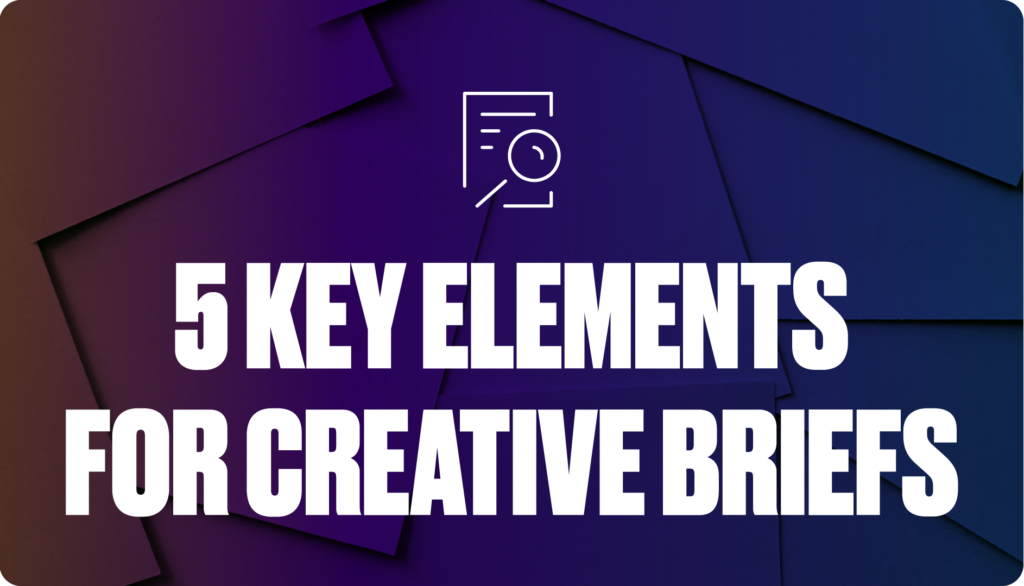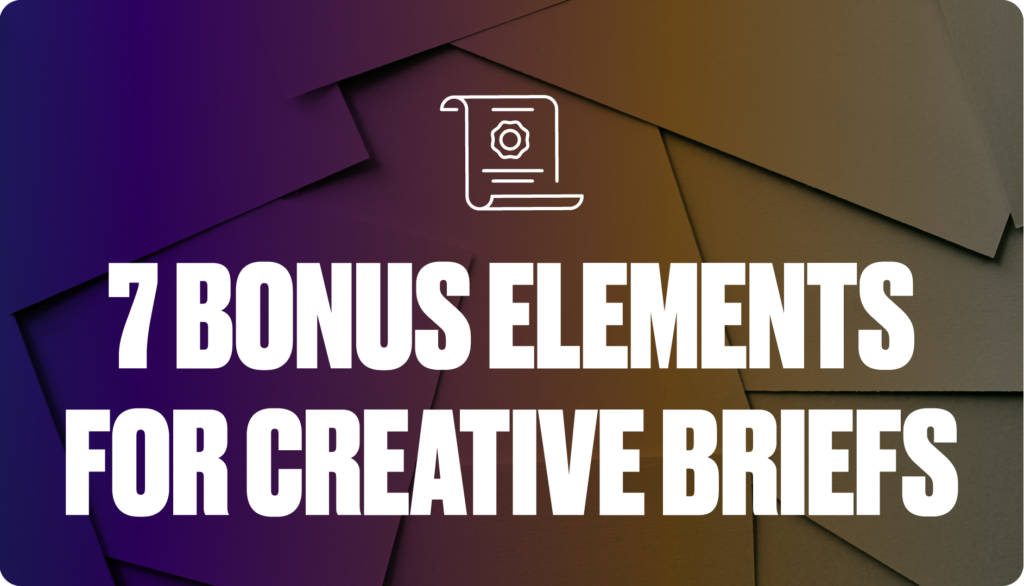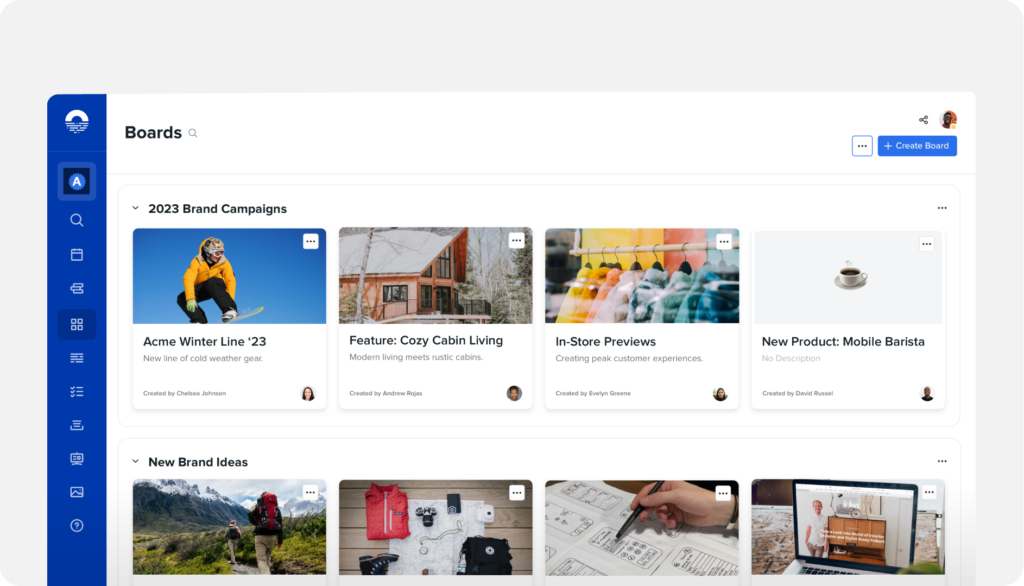by Lee Dussinger
A marketing brief is the seed from which an entire campaign grows. A brief provides an in-depth overview of the concepts, goals, and details of a marketing or advertising campaign. Creating one of these critical documents is widely recognized as the marketing planning process kickoff. Knowing how to write a marketing brief is an essential skill for marketers in every specialization and at every level of an organization.
Opal is the content operations platform that leading brands like Target, Wendy’s, Starbucks, and countless others use to plan marketing. Everything from their advertising briefs, to their content previews, and their master calendars live here (read until the end to explore the specific reasons why top tier brands trust Opal). Since we have a front row seat to the industry, we’re showcasing how our customers – some of the leading marketers in the world – write campaign briefs and tell their brand stories. With their permission, we analyzed their briefs, highlighted the essential elements, and are showing you how to write marketing campaign briefs like the very best!
5 Key Elements of a Creative Brief in Advertising

The length and detail of a creative brief can vary greatly – from single pages to full decks. While length may vary, what matters is the key elements of a creative brief in advertising or marketing. These are the 5 must-have elements you’ll want to include every time to ensure your brief is effective:
Brief Overview
The first section of a campaign brief, the overview is the place to highlight what the market is like, brand positioning, and the campaign goal in a big picture sense. In some briefs, the overview section also includes a single sentence overview of what the entire campaign will entail. Depending on the brief, the overview can detail deliverables needed – or those specifics can be decided by those executing the brief.
Campaign Objectives
This highlights what the campaign or content intends to accomplish. The objectives listed here will be specific, quantifiable, and measurable. As the campaign begins to come together, the objectives are subject to change.
Advertising Audience
When writing a marketing brief, here’s where you identify the target audience of this campaign. The audience section details demographic information like age, gender, economic status, and more quantifiable info. In addition, you can also profile the general likes, dislikes, and interests of the ideal campaign viewer. In some cases, if the company already has officially-defined consumer segments, they can provide the most insight.
Big Idea / Central Thought
If you have a campaign tagline, list it here. If the tagline is being developed as part of the campaign activation, give some concepts for guidance. Variations on a tagline and the cases to use those variations can live here as well. A memorable example of this is from Nike’s Serena Williams Legacy campaign: “By changing nothing, she changed everything”
Reasons to Buy / Emotional Pull
Highlight supporting practical or emotional reasons for your audience to take action. This can be factual, based on competitive differentiation of your product or service. Or in brand-based marketing, this section can highlight your brand story.
These are the 5 elements of a creative brief that need to be included in nearly every case. While these alone can make for complete actionable briefs, the specific nature of your brand and your marketing efforts may necessitate additional details…
7 Bonus Elements to Include in a Brief

Now you know the basics of how to write a marketing brief, however that is far from everything you can include. Essentially, a marketing brief is the master document of a campaign. Anything and everything that can benefit the team should be there.
Here are a few other elements that we commonly see in advertising briefs:
Timelines – Depending on the clarity you have on publication dates, adding a timeline can be crucial. Giving the team a clear idea of due dates during the early phases of the campaign can be beneficial if you have tight deadlines. This is especially important for marketing that has can’t-miss deadlines – like a Super Bowl ad or a campaign push tied to a holiday.
Read how effective briefing enabled Microsoft to produce content 67% faster!
Best Practices – If you want to make your creative brief a true master document, include any best practices. This can involve anything from brand governance information, to visual guidelines, and even rigid do’s and don’ts. By adding this level of detail, a single brief can give a practitioner all of the information they need to represent your brand – in one single document. You often see best practices included in advertising briefs meant for marketing agency partners or hired influencers.
Examples of Other Marketing – Including marketing by other brands in marketing briefing documents isn’t unusual. Primarily these clippings serve as inspiration for how to execute a similar strategy or dynamic to a competitor. Of course, these examples can serve as no-gos to avoid, allowing you to either steer clear of another brand’s recognizable elements or because the competitor’s strategy was a flop.
Creative Assets – If any creative assets have been or will be developed for the campaign (or are being reused from previous initiatives), consider including a place for them as well.
Budget – Budget is a relevant element in a creative brief for specifically paid advertising. If most of the difficult decisions your team needs to make are about the allocation of your spend, giving them budgetary details upfront is prudent.
Placements – As is the case with budgets, including placement suggestions or specifics is critical for paid advertising briefs.
FAQ section – Adding an FAQ section can be a crucial element as well. Once again, this level of supplemental info is common when briefing external teams, influencers, or freelancers as they don’t always have the ability to ask questions of the brief writer. Of course, even for a fully internal team, adding FAQs can provide clarity and save time by reducing back-and-forth communication in a large organization.
The Benefits of Briefing in Opal

The reason that we’re highlighting the essentials of how to write an advertising brief is that briefing is key to the Opal platform. Opal is built to facilitate marketing planning, creating, and calendaring. That planning phase begins with writing a marketing brief.
Since Opal is designed for marketing – and in collaboration with top enterprise marketers – our platform features several unique features and platform benefits that improve briefing:
Dedicated Space for Briefing – It’s not uncommon for marketers to know how to write a marketing brief, but not to know where to do it. While creating a brief is one of the most crucial elements of a campaign, it’s rare to have a dedicated space for it. Opal is that space. We have a dedicated free-form area built for writing campaign briefs – a huge upgrade over planning in random spreadsheets or Google docs. By briefing in Opal you can bring the whole team together and the very beginning. Briefing together, you get stronger ideas, more cohesion around them, and more time spent executing.
Collaboration – Collaborating with your stakeholders or the team can be crucial to writing an effective planning document. By working in Opal’s free-form planning space, bringing the team together is intuitive. Everyone can comment in real time on your ideas, make suggestions, and collaborate on the most complete campaign documents. When you’re ready to disseminate the brief, our workflows send it to everyone who needs it in just a few clicks.
Easy Importing of Ideas – Opal’s browser extension enables users to capture content from anywhere on the web and import it into the Opal platform in seconds. This streamlines marketing briefing by enabling you to effortlessly showcase past work, competitor campaigns, and any other supplemental material. For PR teams who use Opal, the browser extension enables them to capture and store the media coverage to which their brief and campaign will respond.
You Have a Source of Truth – For the marketers who plan, create, and calendar in Opal, it is their source of truth. Opal keeps a record of all the campaigns and content they have ever created. When writing a creative brief, this enables planners and strategists to see a historical record of all the work they have ever done. Having access to this record equips strategists with insight into what they did before or a piece of inspiration to kickstart their creative process.
The Brief Lives Alongside the Work – When you plan in Opal, that brief lives alongside the execution. Anyone on the team can intuitively refer to the brief at any time throughout the campaign – and they can double-check the execution against the plan itself at any time.
Discover the Opal Platform
From creating your advertising and marketing briefs, to previewing and scheduling content, Opal is a dedicated marketing planning platform. Purpose-built for the challenges marketers face, Opal offers countless cutting-edge solutions you won’t find in any other marketing platform. This ranges from free-from space for marketing briefing to true-to-life content mockups so you can preview your work through your audience’s eyes.
If you’d like to see the platform in action, please request a custom demo right here. A product expert will walk you through what Opal can do – and provide you with solutions tailored to your marketing challenges.


